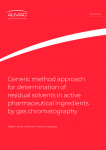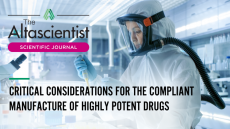$2.25m Settlement as Teva Pushed to Address API Site's Green issues

An API facility in Missouri had been accused by of violating the the Clean Air Act and the Clean Water Act (CAA and CWA) following a number of inspections between 2007 and 2009. Teva Active Pharmaceutical Ingredients (TAPI) – a subsidiary of Teva Pharmaceutical Industries - has agreed to pay the settlement which will be split between the US Treasury and the State of Missouri after receiving a consent decree from the EPA.
Denise Bradley, US Vice President of Corporate Communications at Teva, told in-Pharmatechnologist.com all the environmental issues at the “facility have been addressed and the facility is operating in compliance with all relevant environmental laws.”
However, the EPA’s Public Affairs Specialist Chris Whitley told us that although “the consent decree does resolve the legal issues for Teva,” the company “must also take a series of actions at the Mexico, Missouri, facility that will continue into the future.”
According to an EPA statement Teva needs to:
- Install equipment to recover and reuse approximately 59.5 tons of methylene chloride
- reduce other emissions over five years by 19 tons
- conduct an audit to identify past causes of CWA violations
- implement a programme to prevent leaks of hazardous air pollutants at the facility
- implement an Environmental Management System with third party monitoring
“It would not be entirely accurate to say that all issues at Teva’s facility have now been addressed and sorted out,” explained Whitley. “It IS accurate, however, to say that the settlement puts the company on a path toward doing so.”
Green Manufacturing Practices
Bradley ensured this publication that Teva does “not expect this to have any effect on manufacturing” at the site which produces APIs for a number of antibiotics.
In 2007, Teva was found to be discharging pollutants above a certain level which, in some cases, interfered with the City of Mexico’s sewage system. This led to a green effluent discolouring a section of the Salt River the following year.
Furthermore, the EPA discovered Teva had failed to control hazardous pollutant emissions, in violation of the CAA and in 2009 issues regarding the storing and non-identifying of hazardous waste put the company at odds with the Resource Conservation Recovery Act.
Whitley said the EPA routinely inspected pharmaceutical (and other) manufacturing facilities and followed up with all violations of environmental laws:
“In some instances, violations are discovered not at the time of these inspections,” he said “but rather at the time of accidents or chemical spills that become more widely known—such as in this case, when in late 2008, Teva’s wastewater discharges caused a portion of a local river to turn green.”
Regulations regarding the environment fall under the jurisdiction of the EPA in the US, though there are some general rules enforced by the FDA (US Food and Drug Administration) in its current Good Manufacturing Practices (cGMP) for Finished Pharmaceuticals which do apply.
Subpart C of the regulations, states: “Sewage, trash, and other refuse in and from the building and immediate premises shall be disposed of in a safe and sanitary manner” and though Teva, in this instance fell short of this, the site’s GMP status has not been affected.


















